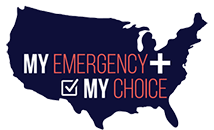All About Post-Exposure Prophylaxis

Post-Exposure Prophylaxis can help you when every care is taken to avoid HIV infection, accidents can happen. From broken or slipped condoms to needle sharing with groups of people whose HIV status is unknown, or even sexual assault, it’s impossible to guarantee 100% safety. Around the world, it’s estimated that about 35 million people currently live with HIV.
Thankfully, a form of treatment is available to help minimize the risk of infection following isolated incidents of exposure. This is called Post-Exposure Prophylaxis or PEP.
Used by healthcare workers for many years following accidental exposure to the virus, Post-Exposure Prophylaxis ( PEP) can’t guarantee 100% effectiveness, although few instances of HIV infection have been reported following Post-Exposure Prophylaxis (PEP) treatment.
Timing Is Critical
The old saying, “time is of the essence”, was never more true than when receiving Post-Exposure Prophylaxis (PEP) treatment. The HIV virus takes hold in the body very quickly, so it is crucial the treatment is started as fast as possible. In fact, it must be started within 72 hours in order to provide the maximum possible protection. After 72 hours, the effectiveness of the treatment drops off dramatically.
There are many emergency rooms or emergency doctors that have Post-Exposure Prophylaxis (PEP) available. Urgent care clinics, emergency rooms, or local HIV clinics. You can visit any of our SignatureCare Emergency Center locations to receive treatment and HIV Testing. Our Emergency Rooms open 24 hours a day, 7 days a week. If you fear you may have been exposed to the HIV virus, don’t delay in seeking medical help- Schedule an appointment at one of our emergency rooms right now.
People Post-Exposure Prophylaxis Can Help
Anyone who has been exposed to HIV as a one-off event is potentially suitable for PEP treatment. Situations include:
- Unprotected sex (regardless of whether it’s gay or heterosexual), including vaginal, anal, or oral (if your partner ejaculated into your mouth).
- Following needle sharing when HIV status is unknown, or the sharer later reveals an HIV positive status.
- After accidental pricking with a needle used to draw blood from an HIV-positive patient.
- Accidentally getting blood or body fluids from an HIV-positive person in your eyes or mouth.
- Accidentally getting HIV-positive blood or body fluids on broken skin or skin with certain rashes.
PEP is an emergency treatment, and should not be viewed as a long-term or regular form of HIV protection. For those whose lifestyle regularly exposes them to the risk of possible infection, there are alternative treatments such as Pre-exposure Prophylaxis. This is intended for long-term use alongside other precautions like regular use of condoms and making sure all injection equipment is sterile.
PEP medication is taken over the course of one month and works by preventing the HIV virus from replicating itself and spreading through the body. It is crucial that the entire course of medication is taken, although evidence from recent studies indicates that less than 60% of people who start the course complete it.
PEP Prescription Guidelines
When you visit the doctor’s surgery or emergency room and ask for Post-Exposure Prophylaxis, it may help to be aware beforehand of the types of questions you will probably be asked. The questions are important in order for healthcare providers to assess your level of risk.
They may for instance, want to know about the type of sex you had (or what was your drug usage experience), and any information you have regarding the HIV status of your partner. Lifestyle questions may also be included to determine whether your risk is ongoing, and you will be given an HIV test to make sure you are HIV-negative to start with. You will also be expected to have a retest once the course of Post-Exposure Prophylaxis treatment is finished.
Possible Side Effects
Some people experience side-effects when they first start taking the treatment and these can include feeling nauseous or actually being sick, feeling generally unwell and more tired than usual, and having diarrhea.
Not everyone experiences side effects, and for those who do they are usually short-lived and not too severe. If any side effects are especially troubling, you should report them to your healthcare provider.
Paying for PEP
How and who pays for PEP depends on the individual’s circumstances. Healthcare workers, for instance, accidentally exposed to the risk of HIV infection should be covered by their workplace health insurance or workers’ compensation. Victims of sexual assault could qualify for a total or partial reimbursement through the Office for Victims of Crime, which is funded by the US Department of Justice.
Individuals may be able to claim under their medical insurance but for those who can’t, free antiretroviral medications may be available through the patient assistance programs of various drug manufacturers. There are also co-pay programs available for PEP treatment. Your healthcare provider will be able to advise and help you apply.
The most important information you should take from this is the advice to act swiftly, within 72 hours, following possible HIV exposure. Once you initiate the process to get treatment, everything else will be explained in detail.




